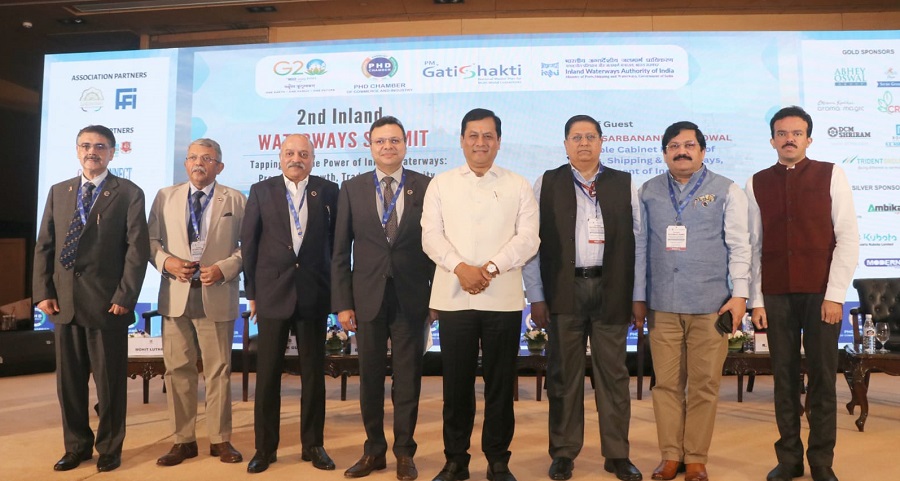New Delhi: The Union Minister of Ports, Shipping & Waterways and Ayush, Sarbananda Sonowal announced the Centre’s plan to develop the Eastern Grid with 5,000 kms of navigable waterways.
The Minister was speaking at the 2nd Inland Waterways Summit organised by PHDCCI, the industry chamber.
Speaking on the occasion, India’s Waterways minister, Sarbananda Sonowal said that the government is working extensively to develop the Eastern Grid with more than 5,000 kms of navigable waterways.
“We are encouraged by the results of work done on National Waterways 1 – the river Ganga,” Sonowal said.
The union minister said given the rich inter web of rivers in the eastern India, which comprises 4 key waterways along with certain international routes, the government plans to develop 5,000 kms of navigable waterways through this grid.
The development of this grid will not only boost regional integration and accelerate development but it will further deepen eastern India’s trade within BBIN countries (Bangladesh, Bhutan, India, and Nepal), Sonowal said.
“It will also further amplify trade potential with countries like Myanmar, Thailand, Malaysia and Singapore,” Sonowal said.
The second Inland Waterways Summit, organised by PHDCCI, has a theme of “tapping into the power of Inland Waterways: promoting growth, trade & prosperity.”
The summit is a platform to explore potential of inland waterways for regional economic integration and sustainable development by the different stakeholders including government, interest groups and business enterprises along with entrepreneurs.
Sonowal said, “With the seamless connection between NW-1(Ganga), NW-2 (Brahmaputra) and NW-16 (Barak), the government is keen to create opportunity via an economic corridor of 3,500 kms connecting the Northeast India with the rest of India, via Bangladesh.”
The minister said it will also link Bhutan and Nepal with Bangladesh onto the international trade routes through a multi-modal connection developed in India. As India develops Sittwe port in Myanmar, the regional economic integration, cooperation and amplification can smoothly happen among BBIN – BIMSTEC – ASEAN countries.
“We are working for deeper and longer network integration of inland waterways in this region to provide a future ready mode of movement; that is economical, sustainable, and efficient,” Sonowal said.
More than 600 million people from this area will benefit from the project as it is likely to propel the new engine of growth, the Northeast India, for economic development, market access & employment generation in the region.
“Eastern Grid can unlock multilateral trade potential of $49 billion dollars as Govt remains committed accelerate growth in eastern India,” Sonowal said.
Beyond the economic advantage, the grid also gives the region strategic advantage of access to international trade routes as well as climate resilience fo an environment friendly transport mode – powered by green hydrogen, electricity, and LNG.















